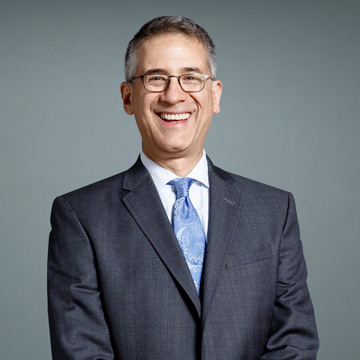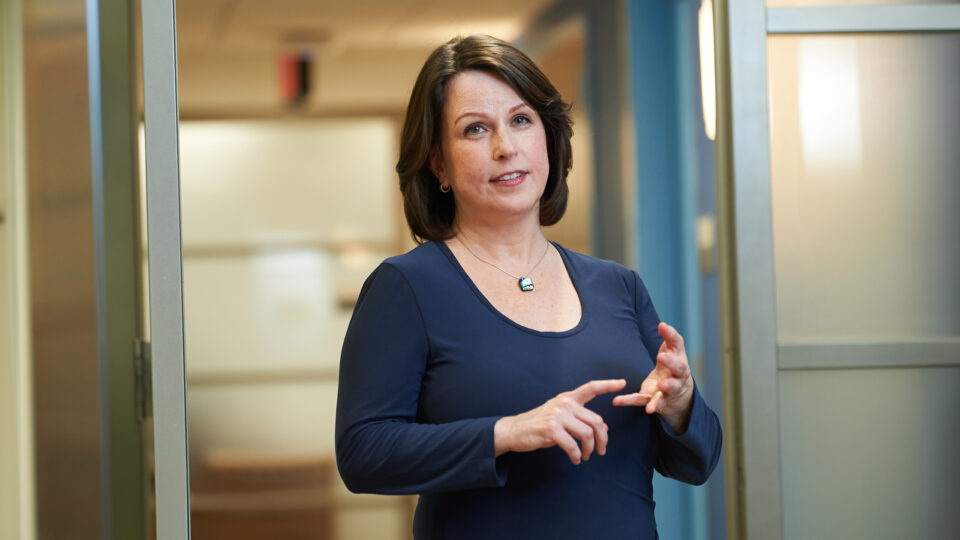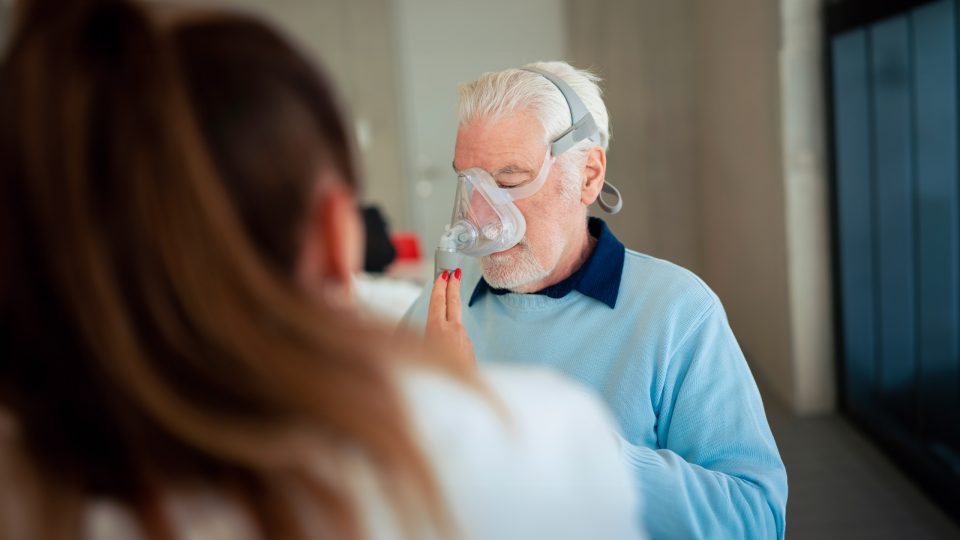Steven Hodak, MD, sat down with Marc K. Siegel, MD, at Doctor Radio on Sirius XM to discuss the new wave of treatments and approaches available for thyroid-related conditions. Sirius XM subscribers can hear the full conversation here—the interview extract below has been edited for length and clarity.
Dr. Siegel: How are we moving in a minimally invasive direction? What does it mean?
Dr. Hodak: We’re really on the precipice of another huge paradigm shift in the way we can take care of thyroid patients. There’s an increasing recognition that minimally invasive treatments can be used for treating thyroid nodules that are unsightly, that cause a cosmetic bulge in the neck, or cause obstructive or compressive symptoms, or that may even be overactive nodules that are producing thyroid hormone and making the patient hyperthyroid.
We now have minimally invasive methods that are done on an outpatient basis in 30 minutes to an hour. In many cases, the patients are awake. They go home the same day, and we’re able to treat that nodule and give the patient a good cosmetic result. Size reduction, normalized thyroid function without ever leaving a scar, and most importantly, preserving normal thyroid function, which is not the case for surgery in up to about half of patients who have had half of their thyroid removed.
Dr. Siegel: What about different techniques when you do decide to remove them? You were an early adopter of radiofrequency ablation.
Dr. Hodak: I went to Korea to learn how to do the procedure. It’s been done in Korea for probably 15 years, and I learned from one of the world masters.
“I went to Korea to learn how to do [radiofrequency ablation] … I learned from one of the world masters.”
Steven Hodak, MD
It uses heat to destroy the tissue, the needle that we use has about the caliber of a piece of spaghetti. It’s about seven inches long. There’s a handle on it, and there’s an active tip of variable size. And that active tip generates very high-frequency energy. What that does is it creates very precisely delivered heat that we can then move around through a nodule under continuous ultrasound guidance, and we can destroy the nodule.
It’s effective, it’s done in the office—30 to 60 minutes—depending on the size of the nodule. It does not remove the nodule, which is one of the benefits of surgery. If we know the nodule is benign and what we’re trying to do is give the patient a good cosmetic outcome, and spare their thyroid function, or alleviate symptoms and spare their thyroid function, it’s a terrific procedure.
Dr. Siegel: We’re dancing around different demarcations of thyroid cancer. What about the different kinds of thyroid cancer and how we approach them differently?
Dr. Hodak: These days, when we’re finding small thyroid cancers in the thyroid gland, and where we know they have not spread locally, one of the treatments that we can discuss is a minimally invasive procedure like radiofrequency ablation. It’s really pretty amazing. I’ve treated some of these small tumors in over 12 to 18 months. After follow-up, the cancer will literally disappear. There won’t be any visible cancer left.
The first case I ever did, years ago at NYU Langone, was a lovely lady who had a variety of complications, but she had what was considered an inoperable papillary thyroid cancer that was growing in size. She had vocal cord paralysis. She had had a lung transplant. The surgeons didn’t want to touch her because they knew if they traumatized her vocal cord nerves, she’d wind up with a permanent tracheostomy, a breathing tube.
“These treatments are fabulously empowering, and we’re really happy we can offer them.”
I agreed to do that case with a minimally invasive method. We were able to completely destroy her cancer, which allowed her to be listed for a kidney transplant that she desperately needed. These treatments are fabulously empowering, and we’re really happy we can offer them.
[Read more about Dr. Hodak’s experience with radiofrequency ablation here.]
Dr. Siegel: How do you approach goiters?
Dr. Hodak: The tried-and-true treatment is surgery, but there are some newer treatments that are very exciting that are reducing the need for surgery. We’re one of very few centers in the United States that does thyroid artery embolization. It’s something that Howard Rinna, who, you know, is the chief of interventional neurosurgery, and I started doing about a year ago.
Howard does this procedure, he’s been doing it for other neurological tumors for many years. It involves taking a thin catheter that’s passed through an artery, typically through a puncture in the groin, just like how an angiogram is done, or any of these other catheter-based procedures. Howard will snake that catheter right up and into the arteries that feed the thyroid, or, in the case of a nodule, feed the nodule itself. Then he instills microscopic embolization beads into the artery. Those beads are carried along with the blood flow, and they eventually lodge when they get to the very tiny vessels, the capillaries, and then the artery starts to backfill with beads, and all of the branch feeders start to get occluded as well.
By doing this, he’s able to stop the blood supply to the thyroid, to a lobe, to the nodule that needs to be treated in this patient procedure that is done as an outpatient, where hospitalization is usually not needed. He’s able to destroy large parts of the thyroid very selectively and reduce these enormous goiters.
The really exciting opportunities are for the patients who have these big goiters that are in their chest. In the old days, some cases, we would have to do a sternotomy and split the chest open to get those goiters out of the deep part of the chest. Howard can treat those now through this vascular procedure. And even if the patient winds up with surgery, it’s an enormously more straightforward surgery when the goiter has been dramatically decreased in size.
Dr. Siegel: What do people do in underserved areas?
Dr. Hodak: The North American Society for Interventional Thyroidology, NASIT, is an organization that I started with a number of people in California, in Florida, in New York, from some of the premier institutions in the country. It really is a home for all of the people doing minimally invasive procedures and interventional thyroidology like I do.
“I always tell people, just because you have a wrench doesn’t make you a good mechanic. You need to know how to use the equipment.”
If people are looking for a doctor like that in their area, there’s a search function on the website. They can go to www.nasit.org, and they can find a doctor in their area.
If someone needs a highly specialized treatment and they don’t have a specialist in their area, they need to find one if that’s the procedure that they need. Doctors at NYU Langone’s Thyroid Program are internationally recognized leaders in providing innovative, supportive, and expert care to people who have thyroid disease. We offer a full spectrum of care, from the diagnosis of thyroid nodules to the newest interventional, minimally invasive treatments that are not widely available at other institutions.
I always tell people, just because you have a wrench doesn’t make you a good mechanic. You need to know how to use the equipment. When people have real diseases that need a real evaluation, making sure that you’re working with a center that really can offer top-of-the-line care and expert diagnostics as well as treatment options—there’s really no substitute for that.






